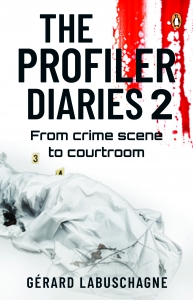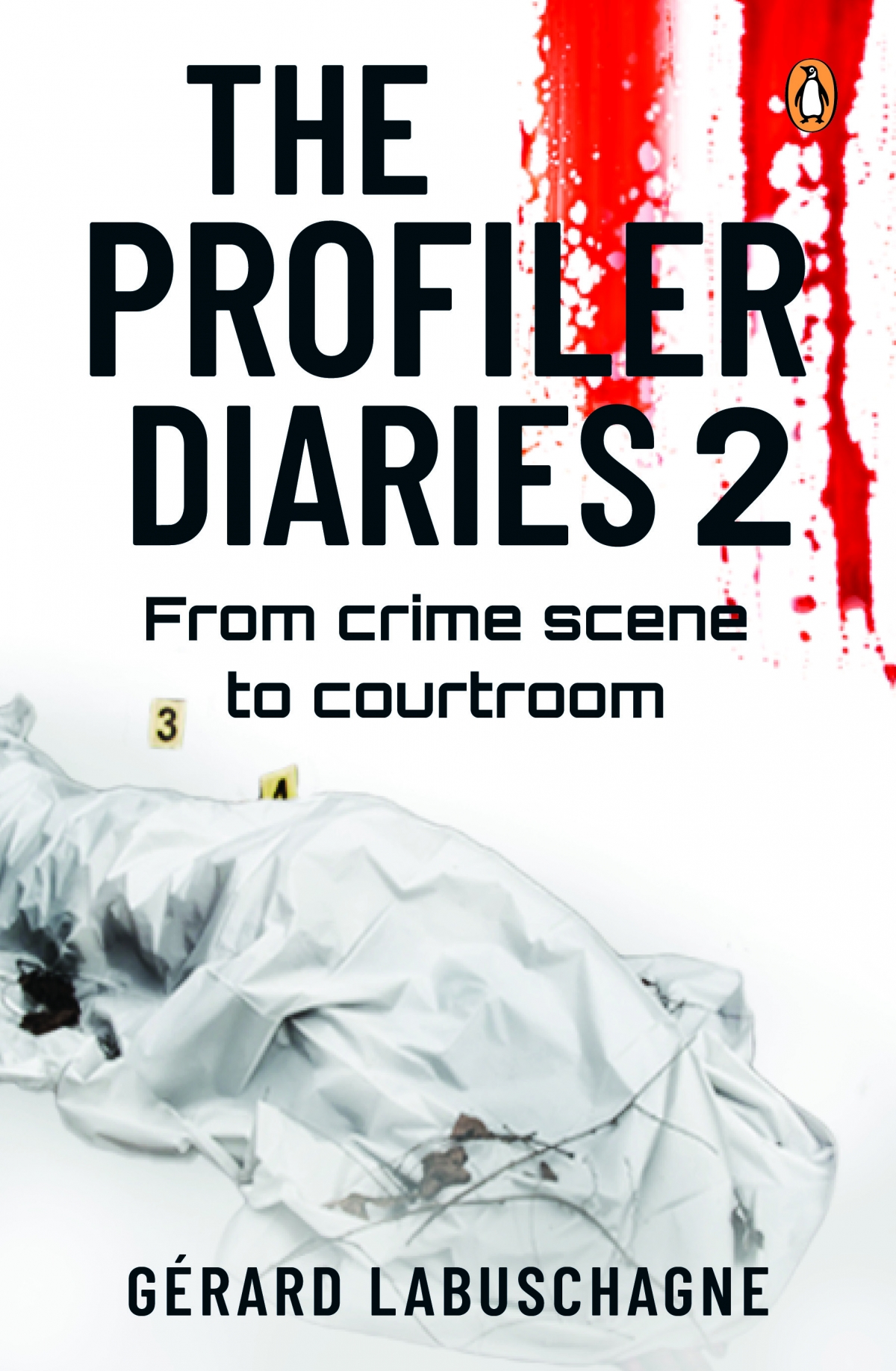
In this second instalment of The Profiler Diaries, former South African Police Service (SAPS) head profiler Dr Gérard Labuschagne, successor to the legendary Micki Pistorius, recalls more of the 110 murder series and countless other bizarre crimes he analysed during his career.
WELKOM
If we hadn’t met, we wouldn’t be in prison. I am not sorry for having met her; I love her. I am sorry for what has happened. We bring out the best and worst in each other.
– Maartens van der Merwe
This was probably one of the most fascinating cases I have ever worked on. The role that violent fantasy played in the build-up to this crime is almost ‘textbook’, meaning that never before (or since) had I encountered so much evidence of it in any of my cases. In serial-murder lore, there is always a fantasy that underlies the actions of the serial murderer, as is also the case in many other psychologically motivated crimes, like those committed by sexual sadists.
However, I didn’t often encounter clear evidence of these fantasies, whether at the suspect’s lair or in interviews after an arrest. This case was different, as you will see. As was the case with Jose da Silva, whose story features in my first book, quick police action prevented a murder series from developing. Another unique feature was that the suspects were a romantic couple.
BACKGROUND
Welkom, a mining town in the Free State, has seen better days. It’s the second largest city in that province, after the capital Bloemfontein, and its name derives from the farm where the original settlement was located.
Our story starts on 3 April 2011, when law-enforcement officials recovered a vehicle that was in the process of being stolen at a taxi rank. They noticed blood on the front door-handles of the car and called it in. Once the police determined that the car belonged to Michael van Eck, they headed to Bedelia, a suburb of Welkom, to the Van Eck family home.
The police arrived at the house early in the morning and had to rouse Naas and Henriëtte van Eck from their sleep. They gave the Van Ecks the registration number of the car they’d found, and they immediately recognised it as their son’s. Only then did Michael’s parents realise that he hadn’t returned home from his date the night before; it was soon established that he had also not arrived at work that day.
The night before, on 2 April, Michael had dinner with his parents and then went on a blind date with a girl he’d met on a chat site called 2go. He told his mother that he was picking up the girl in the suburb of St Helena at 21h00 and that they were going to go to the movies. What the Van Ecks didn’t know was that the meeting point was actually the Welkom cemetery. As the police would later find out, Michael had told his work supervisor that he had met a girl via a cellphone chat site, and that she had suggested meeting at the graveyard; his supervisor had warned him against meeting someone at that location but left it at that.
On the morning of 3 April, the same day that Michael’s car was retrieved at the taxi rank, the caretaker of the Welkom graveyard discovered what appeared to be blood at the entrance to the graveyard, which had been haphazardly covered with sand. The police were informed, and the area cordoned off. The SAPS Dog Unit was called in to search the cemetery. By that time, Michael’s parents were already heading towards the graveyard after Michael’s supervisor told them that the date might have taken place there and not at the movies.
Warrant Officer Fanie du Plessis from the Bethlehem Dog Unit and his dog Xander arrived at about midday, after a two-hour-long drive from Bethlehem. After giving Xander some time to recover from the long journey, Fanie and his dog got to work. Almost immediately, Xander headed towards the Jewish side of the cemetery. About ten minutes later, he signalled that he had found something. Xander had sniffed out a shallow grave, the dirt and grass barely covering the body that lay underneath, indicating that it had been hastily dug. Inside the grave, the police made a grisly discovery: they found a torso and, attached to it, a left arm and hand, genitals and the upper part of the legs. The right lower leg and foot were severed from the body but still inside the grave, as was the left lower leg, though it was missing a foot. Missing completely were the head, the right arm and hand, and the left foot.
Also inside the shallow grave was a pair of blue jeans. The front and back of the torso had multiple stab wounds, and the left hand had defensive wounds from trying to ward off an attack. Forensics would have to confirm that the body parts all belonged to the same person, but it looked likely to be the case. If this was not done, it could lead to awkward questions during trial, and a competent defence lawyer would have a field day with it. In this case, fingerprints would be the quickest way to formally establish the victim’s identity. These would be compared to the database at the Department of Home Affairs.
“Looking at the victim, he immediately knew that it was his son.”
Warrant Officer Ernst de Ru from the local crime-scene unit found a tall glass tumbler with a black floral pattern on it in the grass. He photographed it and collected it for fingerprints.
Michael’s father, Naas, was allowed to approach the now-exposed grave, and looking at the victim, he immediately knew that it was his son. I can’t imagine how he must have felt. This wasn’t just a robbery murder – his son lay mutilated before him in a shallow grave. None of it made sense.
That evening, Sunday 3 April, Colonel Tokkie Jacobs went to see Detective Warrant Officer Elize ‘Ogies’ Nel, who by then had over twenty-five years’ experience in the police, having joined the SAPS shortly after finishing school. Jacobs filled Nel in on the day’s gruesome events. Nel had previously attended training in ‘occult-related crimes’ and, with body parts missing, thoughts of a muti murder were on Jacobs’s mind. Nel, though, wasn’t convinced that the crime was muti-related. Nor was she convinced that it was a ‘satanic’ murder, as some of the features typically associated with such a murder, like the presence of candles, were missing. The following day, Nel was assigned the investigation.
I have to concur with Nel – I also would not have classified this as a muti murder, for a few reasons. Victims of muti murders are rarely left completely naked; nakedness is usually only necessary to gain access to a body part, such as the breasts or genitals, which is then removed. We also don’t often find muti murder victims buried.
Moreover, while not unheard of, a white person is rarely the victim of a muti murder, though a missing head is fairly common in such cases. However, why were the other missing body parts taken in conjunction with the head? This was most unusual. And while not a requirement for it to be a muti murder, the genitals were still present. We also don’t see a lot of wounds in a muti murder case, and here we had overkill. According to research, the average number of stab wounds in a South African murder case is 4.44.
People tend to get way too excited when the possibility of ‘satanism’ crops up as a motive in an investigation, and even more so if it occurs in a staunch Calvinistic Afrikaans community. I am not saying that it isn’t important to try to understand the motive for a crime, whether it be serial murder, muti murder, intimate-partner murder or satanic murder, but in the end an investigation is about conclusively linking the right person to a crime and gathering enough evidence to prove beyond a reasonable doubt, in a court of law, that they did it. Sometimes we can’t understand the motive for a crime, but that doesn’t prevent it from being investigated and solved. We also don’t have to prove motive in South African courts, although it can be helpful in swaying the court’s mind.
So, at this point, we had mutilation, which seemed to have a practical purpose – to make it easier to dispose of the body. Cutting through bone is very difficult without the right tools; a knife won’t suffice. You could maybe hack away at it, chipping the bone, but that will take a very long time, and usually the less time spent hanging around with a murder victim, the better, especially in an open space. Even the dumbest criminal will eventually realise that cutting a body at a joint is faster and a lot less work than going through bone without the right tools.
People often incorrectly assume that if someone dismembers a body, he or she must have had some medical training or worked in a butchery. I can guarantee you, if you need to dispose of the body of the person you’ve just killed, not spending the rest of your life in jail is a pretty good motivator for figuring out how to cut it up.
In this case, the shallow grave was too small, so it was easier to cut up the body and make it fit than trying to dig into the soil (it later transpired that the grave was dug with knives and spoons). Bodies are typically dismembered either to dispose of the victim or to make identification more difficult. As the suspect(s) had left the victim’s left hand at the scene in this particular case, identification destruction was excluded as the goal.
Of course, the next question was: Where were the rest of the body parts? Had they been disposed of somewhere else? A further search of the graveyard didn’t turn up anything.”
Extracted from The Profiler Diaries 2 by Gérard Labuschagne, out now.
YOU MAY ALSO ENJOY
Extract: Heist Men by Andrew Brown









